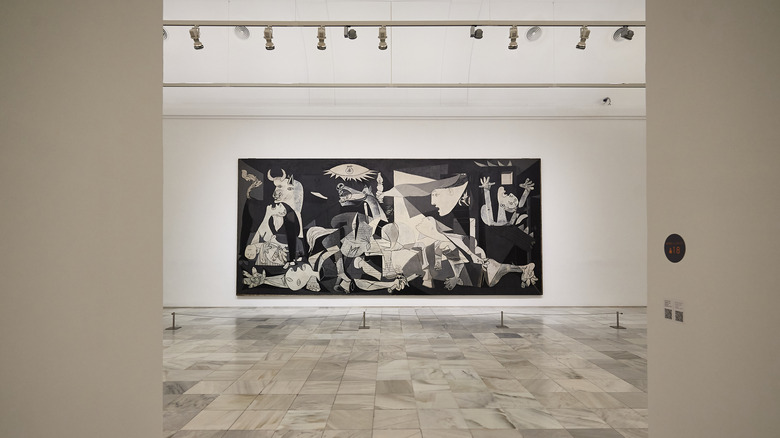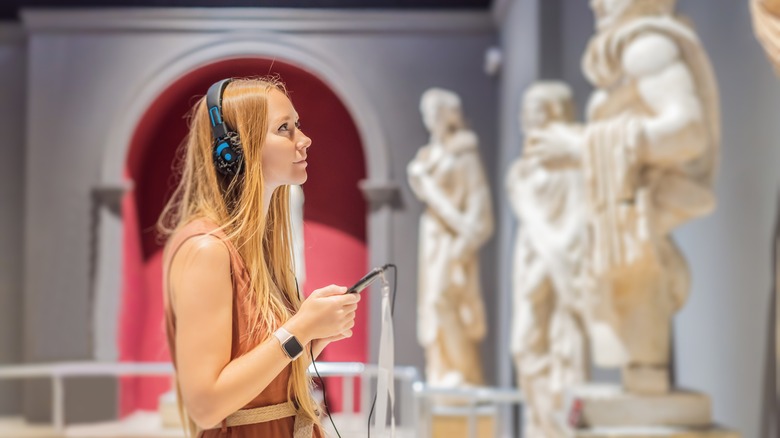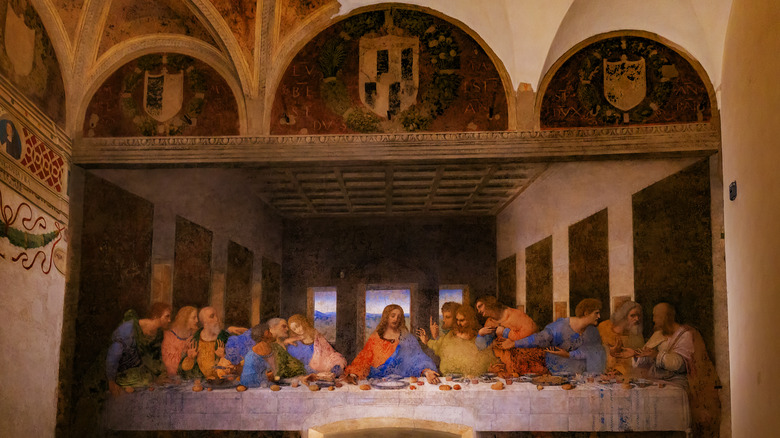Genius Tips To Scope Out The Most Captivating Art In Europe, According To Rick Steves
From Leonardo da Vinci's "Mona Lisa" in Paris to Pablo Picasso's "Guernica" in Madrid, Europe is teeming with some of the world's most iconic works of art. With so many masterful pieces on display, it can be challenging to figure out what to see and how to build a perfect art-focused itinerary. Fortunately, travel guru Rick Steves has shared some valuable tips over the years, including on his website and for Boomer Magazine.
Throughout the years, Steves has made a massive mark in the world of travel. In Season 12 of his long-running show "Rick Steves' Europe," the TV host examined an array of the continent's most renowned art and architecture. Although Steves covers a breadth of art history on his show, he's generally advised travelers to be selective and efficient about the art they see (that's right, let go of that FOMO). The expert also believes that making an effort to understand the artwork can enhance one's experience. But what steps should you actually take to effectively apply these tips to your travels? Let's unpack them.
Guided tours and the postcard hack
While deciding what art to see on your European trip may sound complicated and overwhelming, narrowing your list down can be quite simple. When going to a museum, Rick Steves emphasizes the importance of sticking to the well-known attractions. On his website, he writes, "Only a fraction of a museum's pieces are masterpieces worthy of your time. You can't possibly cover everything — so don't try." Before you go, browse the museum's online collection to pinpoint any attractions that you're eager to see.
Steves notes that many of Europe's most popular museums offer brief pamphlets, which can help you hone in on top exhibits. Guided tours can also give you more focus. Or, you can utilize the travel guru's free app called "Rick Steves Audio Europe," which provides self-guided tours of notable museums in several spectacular cities. To later confirm you didn't skip over anything of value, Steves suggests checking out the gift shop's postcards before heading out. You may discover you missed a certain painting, which a museum staffer can then direct you to.
Even Steves, who embodies an unwavering passion for travel, has his limits, as he admits that three hours of museum-going is typically his cutoff. If there's a particular museum you want to explore more deeply, then he suggests you break up your tour over multiple days.
Consider a work of art's historical context
To elevate your experience of seeing art, take a piece's historical context into consideration, Rick Steves says. The travel expert encourages viewers to look at art from the point of view of those who were alive when the piece was created. In an article for Boomer Magazine, he described an example. Steves explained how Leonardo da Vinci's famous "Last Supper" in Milan's Church of Santa Maria delle Grazie becomes more meaningful when you recognize how special it was for the friars (who usually ate in silence) to eat among holy figures.
According to Steves, acquiring background knowledge about a particular style or work of art beforehand can make the experience more fun and immersive. On his website, Steves outlined how prior research can enrich your appreciation. "When you understand the context in which things were made, who paid for it and why, what the challenges of the day were, and so on, paintings and statues become the closest thing to a time machine Europe has to offer," he wrote.


